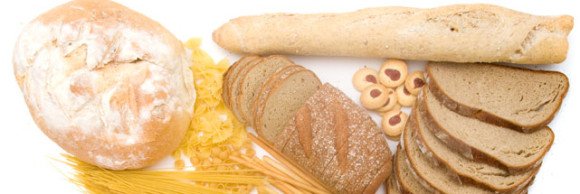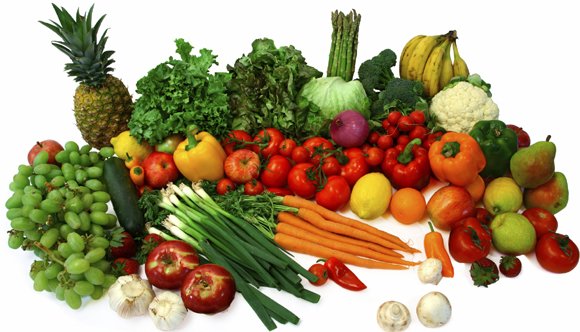Grain based products are everywhere today: pastas, doughnuts, breads, cookies, crackers, cereals, cakes, pastries -there is no escaping or hiding from them.
Most of us grew up learning that grains were one of the four major food groups essential to a balanced diet, at least as important (if not more) than fruits and vegetables. We have been encouraged to eat six to eleven (!) servings of grains per day.
Why Are Grains So Ubiquitous?
In case you are wondering, one of the reasons behind this heavy promotion is that grain-based foods are cheap to make and offer great profits to the manufacturers. The markups on grains are huge, for example, bread is made from about 5 cents of wheat, but we usually pay at least one dollar per loaf.
Grain based products also have long shelf lives, so they don’t spoil easily; plus they are so nutritionally sterile that even insects wouldn’t bother infesting them! If you don’t think that food producers have any say on what the US government recommends in the official dietary guidelines, think again. It’s common knowledge that big food manufacturers are influencing what’s on our plate – big time. They also have the money for lobbying to receive subsidies for the production of even more grains, as well as heavy advertising that includes appealing to both children and adults with cute cereal names and toys in boxes of cereals.
For many children cereal is now their main source of vitamins! For adults, highly processed cereals are promoted as “cholesterol lowering” foods, and whole grains are promoted as a way to prevent digestive diseases and cancer.

The Dark Side of Grains
Problems with gluten tolerance occur much more often than most people realize, however it’s often unrecognized or misdiagnosed, as it can manifest itself by a host of seemingly unrelated symptoms. Gluten intolerance is often associated with IBS, depression, difficulties with your weight, aches and pains in bones and joints, and chronic fatigue. If you suffer from some or all of these problems and you consume foods that contain gluten, perhaps you are gluten intolerant.
As if that was not enough, we get hooked on grains on much deeper level. Grains have drug-like substances that create true food addictions and irresistible cravings in some, if not many people.
Grain allergies and addictions (especially to wheat) are very common and they are unrecognized contributors to the growing epidemic of obesity. Like true addicts, many people are strongly attracted to foods they are allergic to get a “high” from drug-like compounds in them. When the feeling wears off, they crave another “fix”, so they have to eat more of these foods. Unrecognized grain allergies and addictions lead to too-strong-to-resist cravings and overeating, which ultimately lead to weight gain.
Although the U.S. government promotes a high intake of grains, following this strategy actually sets up a lot of people for health problems.
To stay healthy and maintain ideal weight effortlessly, all of us should eat far fewer grain products.
Some of us should eat no grains (not even whole grains) at all.
If these statements come as a shock to you, challenging your beliefs about healthy nutrition, you are not alone.
The truth is grains have a dark side that few people seem to know about. Eating lots of them can potentially lead to virtually every problem in the medical book, including obesity, diabetes, heart disease, some types of cancer, chronic fatigue, digestive disorders, infertility, osteoporosis, and other.
We live in a society where wheat is eaten daily at almost every meal. Pasta, bread, and cereals are promoted as healthy food. They are centerpieces of many people’s diet.
However by loading up on these foods, you may be setting up for degenerative diseases, such as heart disease and diabetes, not to mention weight gain.
Even the whole grains, which are often recommended by nutritionists in place of refined grains, although they do contain more nutrients than their refined counterparts, they also have many anti-nutrients that interfere with good health. By interfering with absorption of many important nutrients they lead to nutrient deficiencies and may set the stage for osteoporosis and autoimmune disorders, not to mention anemia.
Gluten Free Diet: What we should be eating for health & perfect weight
For people suffering from wheat intolerance, the gluten-free diet is no picnic. The focus of a gluten-free cooking is often on replacing gluten flour in baked goods recipes with acceptable starches made from rice, arrowroot, potato, other legumes like chickpeas and wheat starch (all the protein has been carefully removed).
And it isn’t just difficult and inconvenient; but also expensive. For most people it means studying the labels for gluten that often shows up unexpectedly on the list of ingredients.
Fortunately, there is a better way.
The easiest – and best – way to get rid of gluten from your diet is to eat only unprocessed foods. All unprocessed food (obviously, with the exception for the grains which contain gluten) is gluten-free.
In many respects it is easier and nutritionally wiser to forgo the baked goods altogether and eat other foods. The task of changing your diet is very much like moving to another country and culture. You may try to bring all your old habits with you, and struggle to get all of the ingredients that you are used to to create the meals you are used to, or you can gracefully, and with a sense of adventure try the new cuisine.
Certainly, baked foods are delicious and tempting, but so are creatively prepared rice, vegetable, fruit, fish, legume, and meat dishes. Even with multiple exclusions, an appealing, varied diet is within reach if you are willing to change your eating style. The main thing is to be inspired to create and enjoy a new cuisine that will diminish your disturbances, sustain your interest in food, and provide balanced nutrition.
Here is the summary of recommendations for a healthy diet:
•At least 60-80 % of the calories consumed should come from fresh, raw fruits, vegetables, and leafy greens (essential!), as well as nuts and seeds. The important thing the bulk of your fruits, veggies, and greens should be eaten RAW. Raw foods have a wonderful effect on the body – giving you more energy and supplying essential nutrients in the completely unchanged, unprocessed form – just as nature intended them for us!
Since you already know how to make green smoothies, this is an easy part! In the morning, prepare a quart or more of green smoothie and drink it during the course of your day. Eating salads and green juices made with a juice extractor is also a great idea.
•The rest of what you eat during the day should be steamed or slightly cooked vegetables, legumes, and some gluten-free whole grains. Soup, stews, salads and various side dish recipes can be found that are completely gluten free. The following grains and grain-substitutes can be used: rice, quinoa, buckwheat (more closely related to spinach than wheat), corn, amaranth, soy, millet (a good substitute for couscous), potato and tapioca as well as flour made from them.
•Although unprocessed meat, fish, eggs, cheese, milk,are all gluten free, for optimum health it’s recommended to limit consumption of animal products to once or twice per week, or eliminate completely.
•Eliminate all processed foods from your diet – this will save you time studying the labels in the supermarket. If you decide to occasionally have them – read the label carefully. Many foods that may on the first glance seem like gluten free, may still have some quantities of wheat added.

Tolerable foods to eat:
Corn
Rice
Wild rice
Oats
Buckwheat
Millet
Arrowroot
Amaranth
Quinoa
Wheat grass
Tapioca
Taro
Barley grass
Vinegars: apple cider, balsamic, rice
Bean flours
Not OK/Intolerable foods and drinks
Wheat
Rye
Kamut
Teff
Spelt
Soy

